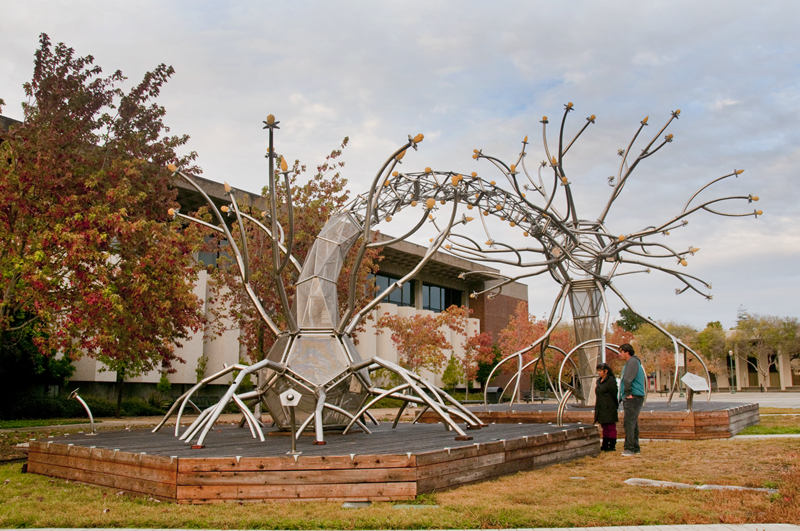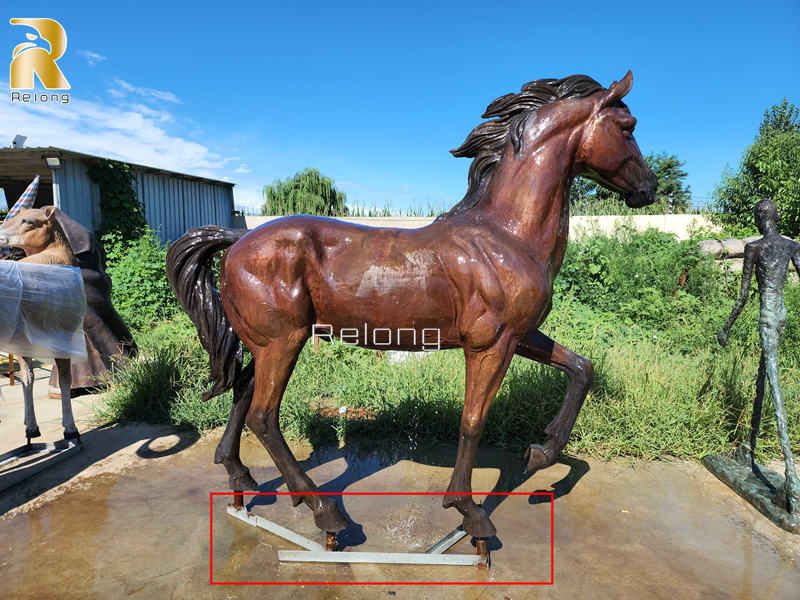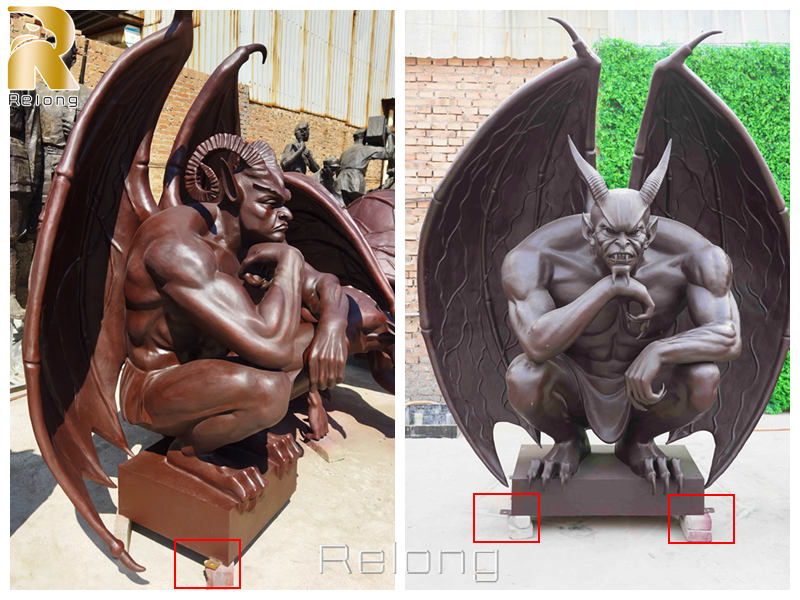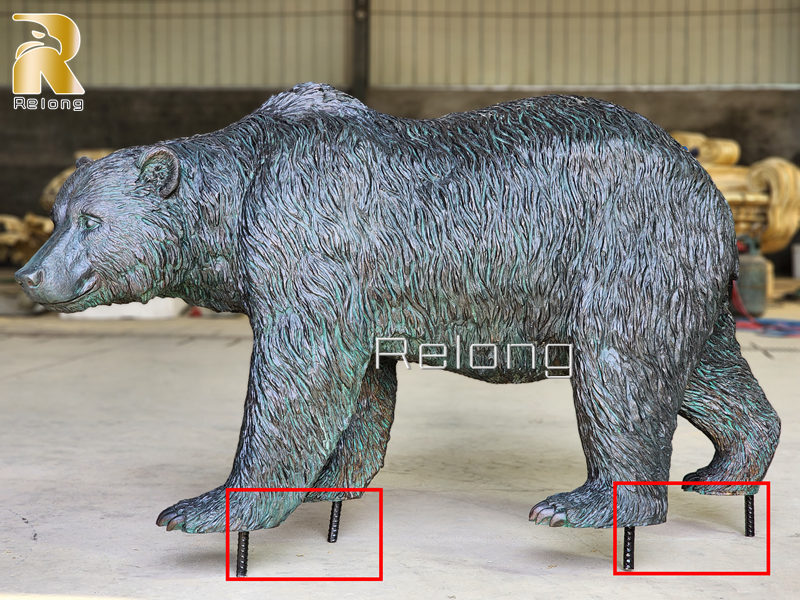When installing large outdoor metal sculptures, pre-burying an anchoring system could provide stability while minimizing site disruption. The sculpture manufacturer would make different pre-embedded methods for the sculpture in advance according to the size, weight, and installation location of the sculpture. Today, I would introduce to you the pre-embedding methods that sculpture manufacturers often make for sculptures. In the following sections, we’ll go over the specifics of each installation method so you could decide what best suits your needs and your metalwork masterpiece.

Iron frame Pre-Burial Method:
Another installation option is to mount the metal sculpture onto a custom-built metal armature or framework that gets buried in the ground. This provides underlying support while allowing you to securely bolt the artwork in place above. Constructing a steel rebar or welded iron frame and sinking it into a concrete footer would anchor the piece while keeping it elevated. The armature acts as a sturdy inner skeleton to hold the weight and balance stresses. It adds structural integrity and stability, especially for very heavy sculptures. Burying just the minimalist base framework reduces disturbance to the site while keeping the artwork visible. This also allows for subtly integrating lighting or other effects inside the sculpture. Building a hidden metal framework is ideal for securely installing large impressive pieces without excessive digging or pouring concrete pads.

Copper Patch Pre-Burial Method
If digging or disrupting the installation site needs to be minimized, another option is using a copper patch buried just below the surface. The copper acts as an anchor plate that could be secured flush with the surrounding soil or gravel, with the artwork seemingly emerging straight from the ground. The benefit of a copper patch is not damaging or altering the existing landscape while keeping the piece steadily in place. It provides a means of underground support and adhesion without pouring concrete or constructing an armature. One drawback is that the edges of the copper may remain partially visible or require careful camouflaging depending on the finish look. Overall, affixing to a buried copper sheet could securely install a bronze bull sculpture or other artwork with minimal invasive preparation needed.

Reinforced Framework for Safe Pre-embedding
One robust sculpture installation technique involves constructing a reinforced steel rebar armature underground. This uses interlocking steel rebar rods welded into a support frame and buried in a concrete footer. Thick rebar pieces are arranged into a minimalist base that matches the shape of the artwork. The sculpture is then bolted directly onto the protruding rebar frame for stability. This armature becomes the hidden foundation anchored in the earth. To install, the rebar assembly is lowered into an excavated footing hole and leveled. Concrete is poured to encase the bottom portion of the rebar and create a submerged anchor. Once cured, the stable armature could be backfilled and the ground restored around it. The outdoor sculpture gets securely mounted to the rebar superstructure now fused to the concrete footing. This ingeniously concealed infrastructure provides sturdy support without visible exterior bases. A rebar armature is ideal for safely installing very heavy or large-scale metal sculptures without excessive digging requirements.

Choosing the Best Pre-Burial Method
It is best to communicate with the sculpture supplier in advance before the sculpture is made. Selecting the ideal pre-burial installation approach depends on several key factors:
Weight and size of the sculpture – Larger and heavier pieces require more robust support structures like direct ground burial or concrete and rebar bases.
Ground surface type – Extra stabilization measures are needed on soft or uneven terrain.
Location flexibility – Some pre-burial options like direct burial make future sculpture relocation more difficult.
Tolerance for landscape disruption – Minimal invasive options like basic copper sheets may be preferred.
Budget – Some pre-burial methods could require more materials and labor costs.
Maintenance needs – Consider the long-term durability and upkeep requirements of different base options.
Aesthetic concerns – Exposed bases like concrete may need some visual appeal treatment.
By weighing these factors and evaluating the tradeoffs of each option for your specific sculpture and site, you could choose the optimal pre-burial installation method. Consider all aspects for the ideal stability, aesthetics and versatility.
Securing your sculpture to the ground is crucial to prevent theft, vandalism, or toppling due to strong winds or other environmental factors. So it is necessary to consider outdoor sculptures’ pre-burial method. If after reading this article, you still don’t know which pre-embedding method to choose, you could leave your contact information below. As a professional sculpture maker, Relong could help you choose the right method for you according to the situation

